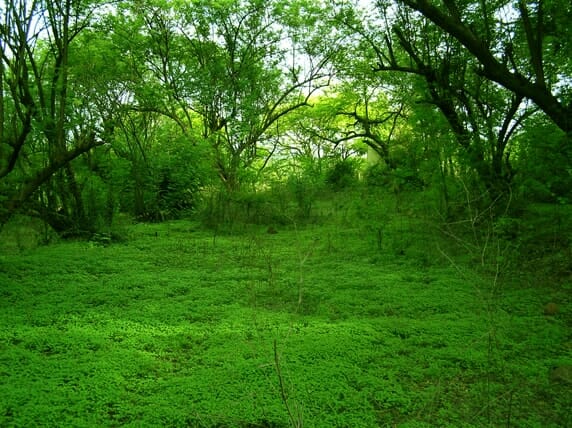Citizens from Marol are going door-to-door with a signature campaign against the Brihanmumbai Municipal Corporation (BMC) for its failure to retrieve gardens from three hotels on the Marol-Juhu belt near Mumbai airport. The hotels were supposed to hand over the garden plots to BMC for public use. “That these three garden plots, with a cumulative measure of approximately 1.3 lakh sq ft of area, are yet to be accessible for public use, should give us a clue about how public open spaces occupied by private groups, star hotels in this case, are inaccessible in Mumbai’s highly urbanised and congested landscape,” says corporator and improvements committee member, Abhijeet Samant, who is pursuing the issue against the star hotels.
How much open space does Mumbai have?
As per the Environment Status Report (ESR) of 2020-2021 compiled by BMC, Mumbai has 365 playgrounds, 478 recreation grounds and 303 gardens (excluding strip gardens and parks). This is higher than the open spaces in Mumbai when the Shiv Sena took over in 2017. As per the ESR of 2016-17, there were just 319 playgrounds, 432 recreation grounds, and 229 gardens, except greenbelts.
While this may look like development on paper, the reality on ground is different. Abhijeet brings attention to two plots in Andheri East, that are reserved separately as playground and recreation gardens. These plots were not open for public use for over two decades due to the lack of an approach road to it. After two years of pursuing the issue in various BMC committees and departments, he has now managed to get an accessway from a neighbouring municipal school plot and the garden should be made available for public use soon.
“There are so many instances where reserved spaces are shown as green spaces in BMC records but stay inaccessible for the public. However, there is no will either by the ruling party or the executive administration to take proactive steps to retrieve such gardens either from private bodies or other government agencies like Slum Redevelopment Authority (SRA) or even from private developers who were supposed to hand over garden plots to BMC,” says Abhijeet.
While the Save Aarey movement did establish a rising green consciousness among Mumbaikars, increasingly, political leadership is under pressure to maintain green public spaces.

What were the promises made regarding open spaces way back in 2017?
Various political parties made green promises in their political manifestos in 2017. Shiv Sena (SS) stated that it would maintain Aarey as a green belt in the Development Plan. It also promised to develop playgrounds for outdoor sports and to execute tree plantations in a big way. The Congress Party observed that BMC had spent Rs 150 crores in developing open spaces, even though about 8 lakh sq ft of open spaces were maintained by private bodies. It promised to reclaim all open spaces, recreation gardens and playgrounds and promised free public access to them, and reclaim open spaces from political leaders who had built their offices on them.
Read more: Aarey “forest” has fired-up Mumbai poll scene
The BJP promised to protect open spaces as an obligatory duty of the BMC, opposing its current discretionary duty. It also promised to develop sporting facilities for different sports in playgrounds, and athletic tracks. It also promised use of satellite images and drone camera technology to protect mangrove forests, and the construction of a Mangrove park on a forty acre plot in Mulund as well as in Kandivali’s Charkop. It also stated that mobile towers in gardens would be prohibited and perspectives from the public will be included while developing local gardens. Both the BJP and the Nationalist Congress Party (NCP) promised to retrieve all open spaces belonging to the BMC and involve local citizens in developing and monitoring them.The NCP also wanted libraries to be developed in gardens and playgrounds for senior citizens. It also promised to draft a policy to beautify spaces around Metro, Monorail, Railways etc with the help of non-governmental organisations.
What is the current status?
Despite promises of tree plantations, the actual number of trees has reduced from 3106868 in 2016-17 to just 2975283 in 20-21 as per the ESR. This is despite promises from all parties. Mumbai’s per capita accessible open space is 1.08 sq meter as against the required norm of 10-12 sq m. The city did try to artificially increase its per capita open spaces on paper by including the national park, mangroves, hill slopes, wetlands, etc, as open spaces.
The BMC is now converting areas below flyovers as green spaces. While 12 such gardens have already been cleared of encroachments and developed as gardens, about 23 more have been identified for the same, according to the ESR of 2020-21. Though many Miyawaki plantations are taking place in the city, the project is yet to take off in a big way. The no-development buffer zones along rivers, nalas and creeks are also being developed as gardens. In 2019, the BMC had invited suggestions to draft a new policy on open spaces but the policy is yet to see the light of the day.
Environmental activist Zoru Bhathena, who has been fighting legal battles, claims that most of the open spaces that were handed over to private parties continue to be misused or encroached and there seems no effort to get them back for public access. Similarly, while crores may have been spent by the garden department in developing gardens, it is generally spent on concretizing them or redeveloping them. There seems to be no accountability.